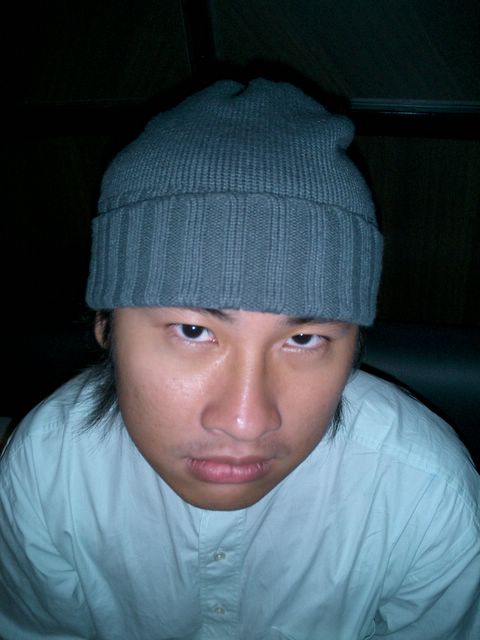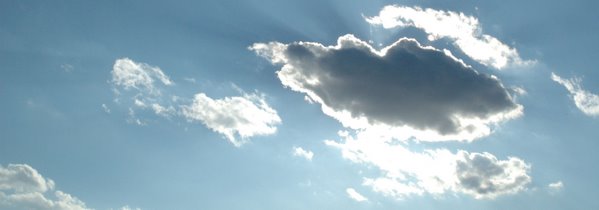This is very sad. Despite what a lot of people might tell you, racism still runs very deep in the southern states of USA, and this latest incident regarding the 'Jena 6' in Louisiana is evidence of this simmering racism underneath. Below are two reports from BBC on this incident.
==========================================================================
Protesters highlight US race row
Thousands of civil rights protesters have held a march in the small US town of Jena, Louisiana, against what they say is continuing racism in the state.
The march was in support of six black teenagers charged with attempted murder after the beating of a white classmate.
All but one of the six have since had their charges reduced to assault. On the day of the march a court ordered a hearing into the sixth man's detention.
The alleged attack followed incidents between school pupils in summer.
In one incident, three nooses were hung from a tree after a black student had asked whether he was allowed to sit in the shade, an area where white students traditionally congregated.
Thousands of activists dressed in black converged on Jena, gathering at the local courthouse and marching along the main streets.
Protesters arrived in buses and cars from cities as far away as New York, Atlanta and Los Angeles.
"I came because enough is enough. I am tired of the way the courts have been treating African-Americans historically", Doug Martin, a computer analyst from New Orleans, told Reuters news agency.
Speaking ahead of the march, civil rights campaigner Rev Al Sharpton said: "This is the most blatant example of disparity in the justice system that we've seen.
"You can't have two standards of justice. We didn't bring race in it, those that hung the nooses brought the race into it."
District Attorney Reed Walters said on Wednesday: "It is not and never has been about race. It is about finding justice for an innocent victim and holding people accountable for their actions."
Dangling nooses
The white teenage victim was beaten unconscious and had a badly swollen face, but was able to attend a school event the same evening.
One of the accused, Mychal Bell, was found guilty of second degree battery in June by an all-white jury before the case was overturned by an appeal court.
The court said Mr Bell, 16 at the time of the alleged incident in December 2006, should not have been tried as an adult.
Five others who face reduced charges of assault have yet to be tried.
A string of incidents between pupils had began the previous summer.
At that time, a black student had asked the school's principal whether he was permitted to sit under the shade of the school courtyard tree, where white students traditionally congregated. He was told he could sit where he liked.
The following morning, when the students arrived at school, they found three nooses dangling from the tree.
The school's head recommended the noose-hangers be expelled, but the governing board overruled him and the three white student perpetrators were briefly suspended.
Mr Walters said the white students were not prosecuted because he could find no state law under which to charge them.
Story from BBC NEWS:
http://news.bbc.co.uk/go/pr/fr/-/2/hi/americas/7004975.stm
Published: 2007/09/21 00:47:30 GMT
© BBC MMVII
===========================================================================
Stealth racism' stalks deep South
By Tom Mangold, Louisiana
This World investigates the rise of discrimination in America's deep south as six black youths are charged with an alleged attack on a white student, which could see them jailed for up to 50 years.
Three rope nooses hanging from a tree in the courtyard of a school in a small Southern town in Louisiana have sparked fears of a new kind of "stealth" racism spreading through America's deep south.
Although this sinister episode happened last August, the repercussions have been extensive and today the town of Jena finds itself facing the unwelcome glare of national and international publicity.
Jena has a mixed community, 85% white, 12% black.
The bad old days of the "Mississippi Burning" 60s, civil liberties and race riots, lynchings, the KKK and police with billy clubs beating up blacks might have ended.
But in the year that the first serious black candidate for the White House, Barak Obama, is helping unite the races in the north, the developments in the tiny town of Jena are disturbing.
Nooses in the playground
It all began at Jena High School last summer when a black student, Kenneth Purvis, asked the school's principal whether he was permitted to sit under the shade of the school courtyard tree, a place traditionally reserved for white students only. He was told he could sit where he liked.
The following morning, when the students arrived at school, they found three nooses dangling from the tree.
Most whites in Jena dismissed it as a tasteless prank, but the minority black community identified the gesture as something far more vicious.
"It meant the KKK, it meant 'niggers we're going to kill you, we're gonna hang you 'til you die'," said Caseptla Bailey, one of the black community leaders.
Old racial fault lines in Jena began to fracture the town. It was made worse when - despite the school head recommending the noose-hangers be expelled - the board overruled him and the three white student perpetrators merely received a slap on the wrist.
Troubled community
Billy Doughty, the local barber, has never cut a black man's hair. But he does not think there is a racism problem in Jena.
Caseptla Bailey who is 56 and a former Air Force officer, has a degree in business management, but she cannot get a job as a bank teller. She lives in an area called Ward 10, which is where the majority of blacks live in trailers or wooden shacks. She says no whites live there at all.
"We want to live better, we want better housing." she says. "The Church says we should all be brothers and sisters in Christ".
Yet Sunday morning is perhaps one of the most segregated times in all of America. In the white neighbourhood, Pastor Dominick DiCarlo has only one black member of the Church, out of 450 resident members.
Race-related fights
As racial tension grew last autumn and winter, there were race-related fights between teenagers in town. On 4 December, racial tension boiled over once more at the school when a white student, Justin Barker, was attacked by a small group of black students.
He fell to the ground and hit his head on the concrete, suffering bruising and concussion.
He was treated at the local hospital and released, and that same evening felt able to put in an appearance at a school function.
District Attorney Reed Walters, to the astonishment of the black community, has upgraded the charges of Mr Barker's alleged attackers to conspiracy to commit second degree murder and attempted second degree murder. If convicted they could be 50 before they leave prison.
Mr Walters has refused to give an on-the-record interview to the BBC about his decision on the charges.
Mr Barker has since been charged with possessing a firearm in an arms-free zone (the school grounds).
The six black students will face a hearing next month. One of them is Caseptla Bailey's son Robert, who originally had his bail set at an unaffordable $138,000 (£69,495).
She had to hire a private lawyer who managed to get Robert's bail reduced to $84,000 (£42,285) so that her family could meet it.
Michelle Jones' brother Carwyn is one of the boys charged. She is adamant that he will not get a fair trial in Jena.
"If he's tried here, the jury will pick who they want. I have no doubt that they will convict those boys of attempted second degree murder."
When they do eventually file into court, many observers believe it is the town of Jena which will really be on trial.

世界在破晓的瞬间前埋葬于深渊的黑暗
Friday, September 21, 2007
Subscribe to:
Post Comments (Atom)






No comments:
Post a Comment